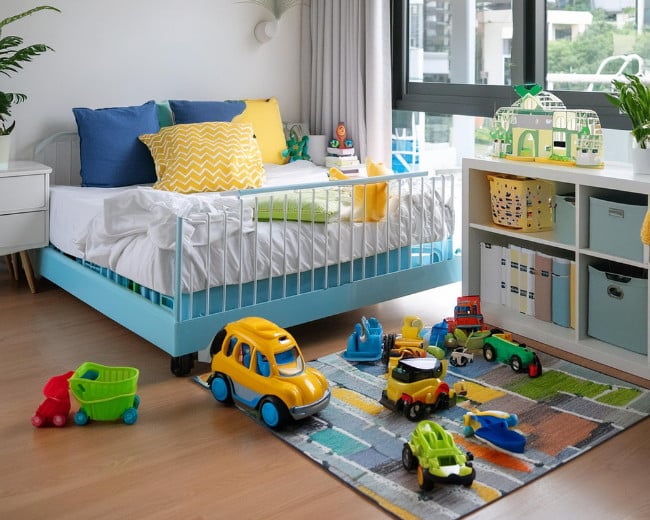If you’ve ever had children in your home, chances are you’ve encountered their artistic masterpieces gracing surfaces you never intended—including wood furniture or floors. Knowing how to remove crayon from wood can feel like a small miracle when you’re faced with stubborn marks. But don’t worry; with the right approach, your wood surfaces will be crayon-free in no time.
In this guide, we’ll share the most effective methods for tackling crayon marks on wood while preserving its finish. Whether it’s your dining table, hardwood floors, or that antique dresser, these techniques will work wonders.
Why Crayon Sticks to Wood
Before diving into the solutions, it helps to understand why crayon can be so tricky to remove. Crayons are made of wax and pigments. When pressed onto wood, the wax adheres to the surface, and the pigment settles into the texture of the wood grain. The key to removing crayon effectively is breaking down the wax while lifting the pigment without damaging the finish.
Simple Methods to Remove Crayon from Wood
1. Soap and Water
This classic approach is a great starting point for light marks on finished wood surfaces.
- What You’ll Need: Warm water, mild dish soap, sponge, and soft cloth.
- Steps:
- Mix a few drops of dish soap in warm water.
- Dip a sponge into the soapy solution and wring it out well.
- Gently scrub the crayon mark in a circular motion.
- Wipe with a clean, damp cloth and dry thoroughly.
This method works best on small, recent marks that haven’t set into the wood grain.
2. Baking Soda Paste
Baking soda is a mild abrasive that can tackle tougher crayon marks without scratching the surface.
- What You’ll Need: Baking soda, water, and a soft cloth.
- Steps:
- Combine baking soda and water to make a paste.
- Apply a small amount to the crayon marks.
- Gently rub the paste into the wood using a soft cloth.
- Wipe clean with a damp cloth and dry.
3. Vinegar Solution
For stubborn crayon stains, vinegar can break down wax and lift the pigment from wood surfaces.
- What You’ll Need: White vinegar and a cloth.
- Steps:
- Dampen a cloth with white vinegar.
- Rub the crayon mark gently in circular motions.
- Wipe away any residue with a damp cloth and dry.
Vinegar is a great option because it’s natural and safe for most wood finishes. Plus, it leaves your surfaces smelling fresh!
4. Non-Gel Toothpaste
If you have non-gel toothpaste handy, it can act as a mild abrasive to remove crayon marks.
- What You’ll Need: Non-gel toothpaste and a soft-bristled brush or cloth.
- Steps:
- Apply a small amount of toothpaste to the crayon marks.
- Use a soft-bristled brush or cloth to gently rub the area.
- Wipe clean with a damp cloth and dry.
This method is effective and doesn’t involve harsh chemicals, making it ideal for families.
5. Heat and Paper Towels
For larger or waxier deposits of crayon, a little heat can go a long way.
- What You’ll Need: Hairdryer and paper towels.
- Steps:
- Use a hairdryer to gently heat the crayon marks. This softens the wax.
- Wipe away the softened wax with a paper towel.
- Clean any residue with soap and water or vinegar.
Heat is particularly helpful for getting rid of thicker crayon layers.
6. Commercial Cleaning Products
If all else fails, a commercial cleaning product like Goo Gone or a Magic Eraser can be your saving grace.
- What You’ll Need: Product-specific instructions.
- Steps:
- Follow the directions on the product label.
- Apply carefully and test on an inconspicuous area first to ensure it won’t harm the wood’s finish.
- Clean the surface thoroughly after use.
These products are powerful but should be used sparingly and with caution.
Prevention Tips for Future Crayon Mishaps
To keep your wood surfaces safe from future crayon masterpieces:
- Encourage kids to use paper or designated art spaces.
- Cover wooden furniture with tablecloths or protective covers during craft time.
- Keep washable crayons on hand for easier cleanup.
When to Call the Pros
If the crayon marks are particularly extensive or you’re concerned about damaging antique or delicate wood, it may be worth seeking professional cleaning services. Skilled cleaners have the expertise and tools to restore your wood to its former glory without risking damage.
Speaking of professionals, if you’re ever in need of a comprehensive maid service Louisville, Family First is here to help. From crayon stains to deep-cleaning needs, we’ve got you covered.
Conclusion
Removing crayon from wood doesn’t have to be a chore. With these tried-and-true methods, you can tackle even the most stubborn marks while keeping your wood surfaces intact. So the next time creativity runs wild in your home, you’ll know exactly what to do.
Happy cleaning—and remember, the art of messes is only as good as the art of tidying up!


